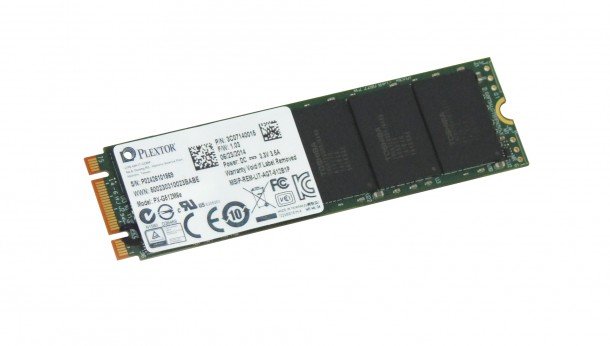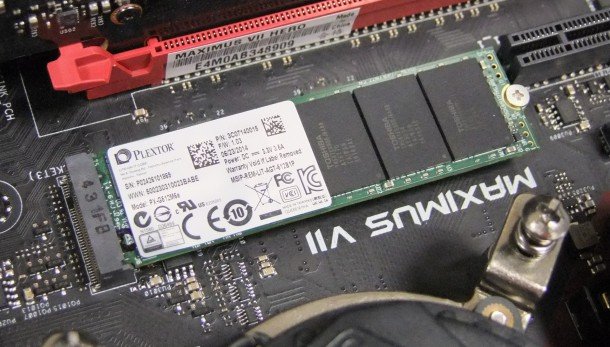This SSD plugs into a spare PCIe slot, but is it faster?

That thing in the above picture is an SSD, and a hoofing big one too. The Plextor M6e is the first M.2 SSD I've had arrive in the office, and it's a 512GB drive that aims to circumvent the limitations of current SATA connections by using the same PCI Express bus that's been providing oodles of bandwidth to graphics cards for years.
In fairness some SSD manufacturers, like OCZ and Kingspec, have already been producing PCIe-based drives that slot in side-by-side with your graphics card. Those have been using the combined performance of multiple SSDs to create the extra speed, were this Plextor M6e is doing all the work itself.
The M.2 interface in most of the Z97 motherboards I've tested has a theoretical limit of 1GB/s compared with the 600MB/s limits of SATA. The beauty of using the PCIe bus is that in the future manufacturers can open up more PCIe lanes to allow for even higher possible bandwidth around the 4GB/s mark.
The Plextor M6e isn't quite up in those numbers just yet. My preliminary tests have the 512GB version hitting sequential read/write figures of 676MB/s and 620MB/s respectively in the AS SSD benchmarking software.

While that bests any SATA-based SSD I've ever tested—including Samsung's latest V-NANDtastic 850 Pro—the 4k random read/write results are nowhere near as spectacular.
At 31MB/s for the reads it's up there with the best, but at just 72MB/s for the writes it's considerably slower than the bargain-basement Crucial MX100 512GB SATA drive.
So, while the Plextor M6e is demonstrably breaking the limits of the SATA barrier, it's not doing it by much and not making any inroads into the responsiveness 4k tests.
Keep up to date with the most important stories and the best deals, as picked by the PC Gamer team.
It's early days for the M.2 interface, but once we get the proper SSD-focused NVMe standard rather than the current AHCI—the standard protocol for elderly spinning platter hard drives—I think we'll start to see things change massively in the SSD world.

Dave has been gaming since the days of Zaxxon and Lady Bug on the Colecovision, and code books for the Commodore Vic 20 (Death Race 2000!). He built his first gaming PC at the tender age of 16, and finally finished bug-fixing the Cyrix-based system around a year later. When he dropped it out of the window. He first started writing for Official PlayStation Magazine and Xbox World many decades ago, then moved onto PC Format full-time, then PC Gamer, TechRadar, and T3 among others. Now he's back, writing about the nightmarish graphics card market, CPUs with more cores than sense, gaming laptops hotter than the sun, and SSDs more capacious than a Cybertruck.

